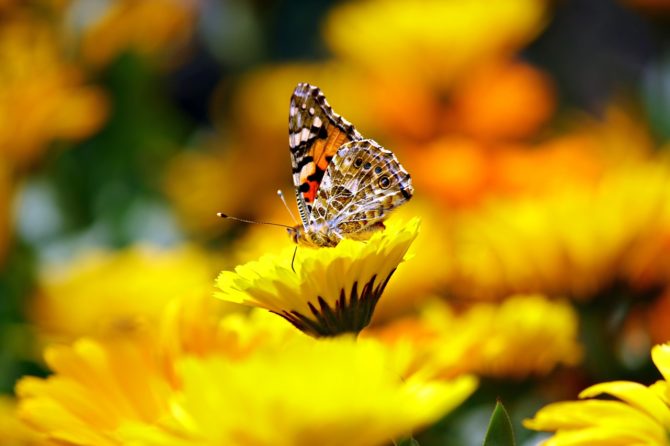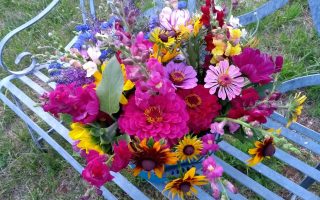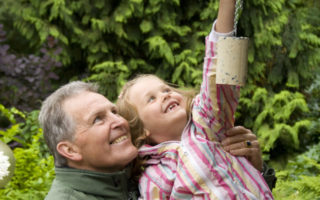30 Wildlife Friendly Plants for Your French Garden


The Jardins of France are world renowned for their vibrant colours, with streaks of blazing orange and yellow immortalised in the paintings of Van Gogh; and deep blues, delicate purples and lush greens captured timelessly by Monet. But to truly bring a French garden to life you must also choose your plants and flowers with the animal kingdom in mind, opting for species that will encourage local birds, bees and butterflies to congregate in your back yard. With this list you can create your own peaceful oasis; teeming with life, and in harmony with nature.
When asking for plants in France use the Latin name as this is will be understood. As well as the plants listed here, it is also worth taking a look at your nearest garden centre – many now sell boxes of seed for annual flowers that are especially attractive to wildlife.
BIRDS
When choosing plants think about shelter for nesting as well as seed and berries for food – providing the latter during the autumn and winter months
* Agastache foeniculum (Anise hyssop) – small seed-eaters such as goldfinches
* Asters (Michaelmas daisy) – autumn seeds
* Berberis cultivars – autumn berries
* Coreopsis lanceolata (Lanceleaf coreopsis) – summer and early autumn seeds
* Cornus (dogwood) – nesting
* Cotoneaster – nesting and winter berries
* Dipsacus fullonum (teasel) – autumn and winter seed
* Elaeagnus x ebbingei (elaeagnus) – autumn and winter seed
* Helianthus annuus (sunflower) – late summer and early autumn seed
* Knautia – autumn seeds
* Lonicera sempervirens (honeysuckle) – autumn berries
* Mahonia aquifolium – spring berries
* Malus (crab apple) – autumn and early winter fruit
* Monarda didyma (bergamot) – autumn seed
* Papaver orientale (oriental poppy)
* Parthenocissus (Virgina creeper)
* Rudbeckia (black-eyed Susan; coneflower) – seeds during winter
* Sambucus (elder) – late autumn and early winter berries
* Solidago (golden rod) – autumn seed
* Sorbus (mountain ash) – autumn berries and nesting
* Virburnum – nesting and cover, plus winter berries
BUTTERFLIES
Choose a range of plants to provide nectar from early spring to late autumn
* Agastache foeniculum (Anise hyssop) – nectar into the winter
* Anthemis tinctoria (golden marguerite) – summer
* Asclepias tuberosa (milkweed) – particularly the Monarch butterfly in spring and summer
* Asters (Michaelmas daisy) – late summer
* Buddleja davidii (butterfly bush) – mid-late summer
* Calendula officinalis (marigold) – summer to mid-autumn
* Caltha palustris (March marigold) – early spring
* Ceanothus evergreen (Califonia lilac) – late spring and early summer
* Coreopsis lanceolata (Lanceleaf coreopsis) – late spring to mid-summer
* Cosmos bipinnatus (Cosmos) – until mid-autumn
* Dianthus barbatus (sweet william) – spring and summer
* Dipsacus fullonum (teasel) – summer to late autumn
* Echinacea purpurea (echinacea or coneflower) – to early autumn
* Helianthus annuus (sunflower) – mid-summer to early autumn
* Jasmine officinale (jasmine) – to early autumn
* Knautia – until late summer
* Lavandula (lavender) – summer
* Lonicera sempervirens (honeysuckle) – until early autumn
* Lychnis flos-cuculi (red campion) – from late spring
* Mahonia aquifolium – early spring
* Papaver orientale (oriental poppy) – from late spring to early summer
* Rudbeckia (black-eyed Susan; coneflower) – late summer to winter
* Scabiosa (scabious) – until early autumn
* Sedum – summer
* Solidago (golden rod) – late summer to early autumn
* Sorbus (mountain ash) – from early spring
* Verbena bonariensis (verbena) – from early summer to early autumn (first frost)
* Virburnum – from late spring
BEES
Select a range of plants to provide nectar from early spring to late autumn
* Achillea (yarrow) – summer to early autumn
* Antirrhinum majus (snapdragon) – particularly good for bumblebees
* Calendula officinalis (marigold) summer to mid-autumn
* Caltha palustris (March marigold) – early spring
* Ceanothus evergreen (Califonia lilac) – late spring and early summer
* Coreopsis lanceolata (Lanceleaf coreopsis) – late spring to mid-summer
* Cosmos bipinnatus (Cosmos) – until mid-autumn
* Dianthus barbatus (sweet william) – spring and summer
* Digitalis purpurea (common foxglove) – from early summer
* Dipsacus fullonum (teasel) – summer to late autumn
* Echinacea purpurea (echinacea or coneflower) – to early autumn
* Elaeagnus x ebbingei (elaeagnus) – late autumn
* Eranthis hyemalis (winter aconite) – very early spring
* Helianthus annuus (sunflower) – mid-summer to early autumn
* Jasmine officinale (jasmine) – to early autumn
* Lavandula (lavender) – summer
* Lonicera sempervirens (honeysuckle) – until early autumn
* Lychnis flos-cuculi (red campion) – from late spring
* Malus (crab apple) – spring
* Monarda didyma (bergamot) – summer
* Papaver orientale (oriental poppy) – from late spring to early summer
* Primula veris (cowslip) – early spring
* Rudbeckia (black-eyed Susan; coneflower) – late summer to winter
* Scabiosa (scabious) – until early autumn
* Sedum – summer
* Solidago (golden rod) – late summer to early autumn
* Sorbus (mountain ash) – from early spring
* Verbena bonariensis (verbena) – from early summer to early autumn (first frost)
* Virburnum – from late spring
HOVERFLIES
As with bees, pick a range of plants that provide nectar from early spring to late autumn
* Achillea (yarrow)
* Anethum graveolens (dill)
* Anthemis tinctoria (golden marguerite)
* Calendula officinalis (marigold)
* Dipsacus fullonum (teasel)
* Lychnis flos-cuculi (red campion)
* Papaver orientale (oriental poppy)
* Solidago (golden rod)
* Verbena bonariensis (verbena)
SEE ALSO:
Share to: Facebook Twitter LinkedIn Email
More in centre, food, garden, summer
By FrenchEntrée
Leave a reply
Your email address will not be published. Required fields are marked *




REPLY